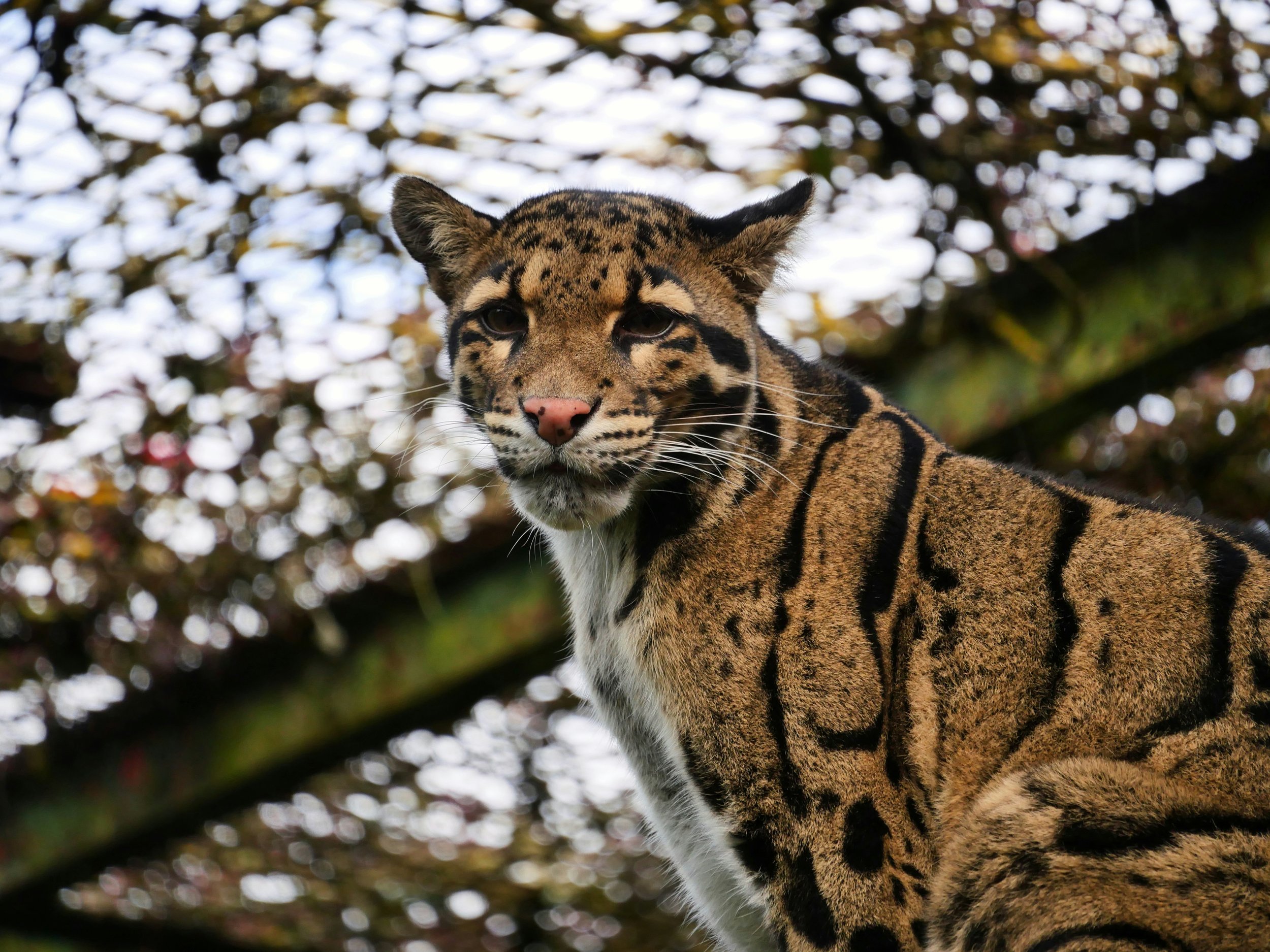
Clouded Leopard: The Ghost of the Forest
The Clouded Leopard is one of the most elusive and mysterious felines in the world, native to the dense forests of Southeast Asia. Known for its beautiful cloud-like coat pattern and impressive climbing abilities, the Clouded Leopard is an expert at navigating through the treetops. With its solitary nature, the cat is rarely seen, making it even more fascinating. However, despite its adaptability, the Clouded Leopard faces a series of threats that put its survival at risk.
Where Do Clouded Leopards Live?
Clouded leopards are found in the dense tropical and subtropical forests of Southeast Asia, including countries like Nepal, Bhutan, Bangladesh, Myanmar, Thailand, Malaysia, Laos, Vietnam, Cambodia, and parts of southern China. They prefer forested hills and mountainous terrain, often at elevations up to 3,000 meters, where the thick canopy provides cover for hunting and protection from larger predators.
Threats Facing the Clouded Leopard
-
The rapid deforestation of Southeast Asia's rainforests has fragmented the Clouded Leopard's habitat, leaving the cats with fewer places to call home. This makes it difficult for them to find food and safe areas to breed.
-
The Clouded Leopard is often targeted for its beautiful fur, which is highly valued in the illegal wildlife trade. In some areas, they are also hunted for their bones, which are used in traditional medicine.
-
As human populations expand, the Clouded Leopard's habitat continues to shrink. In some cases, these cats venture into farmland and villages, where they may be killed by farmers or villagers who view them as threats to livestock.
Conservation Efforts and How People Are Helping
Several conservation organizations are actively working to protect the Clouded Leopard through a variety of strategies:
Habitat Protection and Restoration: Programs are underway to protect and restore the Clouded Leopard’s natural habitat. This includes working with local communities to prevent deforestation and promoting sustainable land-use practices.
Anti-Poaching Initiatives: Organizations like Panthera are working tirelessly to combat poaching by increasing patrols in protected areas, working with local authorities to enforce wildlife protection laws, and educating communities about the importance of preserving these cats.
Research and Monitoring: Scientists are using camera traps and radio collaring to better understand the behavior and population of Clouded Leopards in the wild. This data helps to inform conservation strategies and policies aimed at protecting them.

The Clouded Leopard may be elusive, but it remains an essential part of the ecosystems it inhabits. As deforestation continues and poaching persists, the survival of this magnificent creature depends on our efforts to protect its habitats, reduce human-wildlife conflict, and ensure a sustainable future for the Clouded Leopard. With continued conservation work and public awareness, there is hope that this stunning feline will thrive in the wild for generations to come.

Next is


